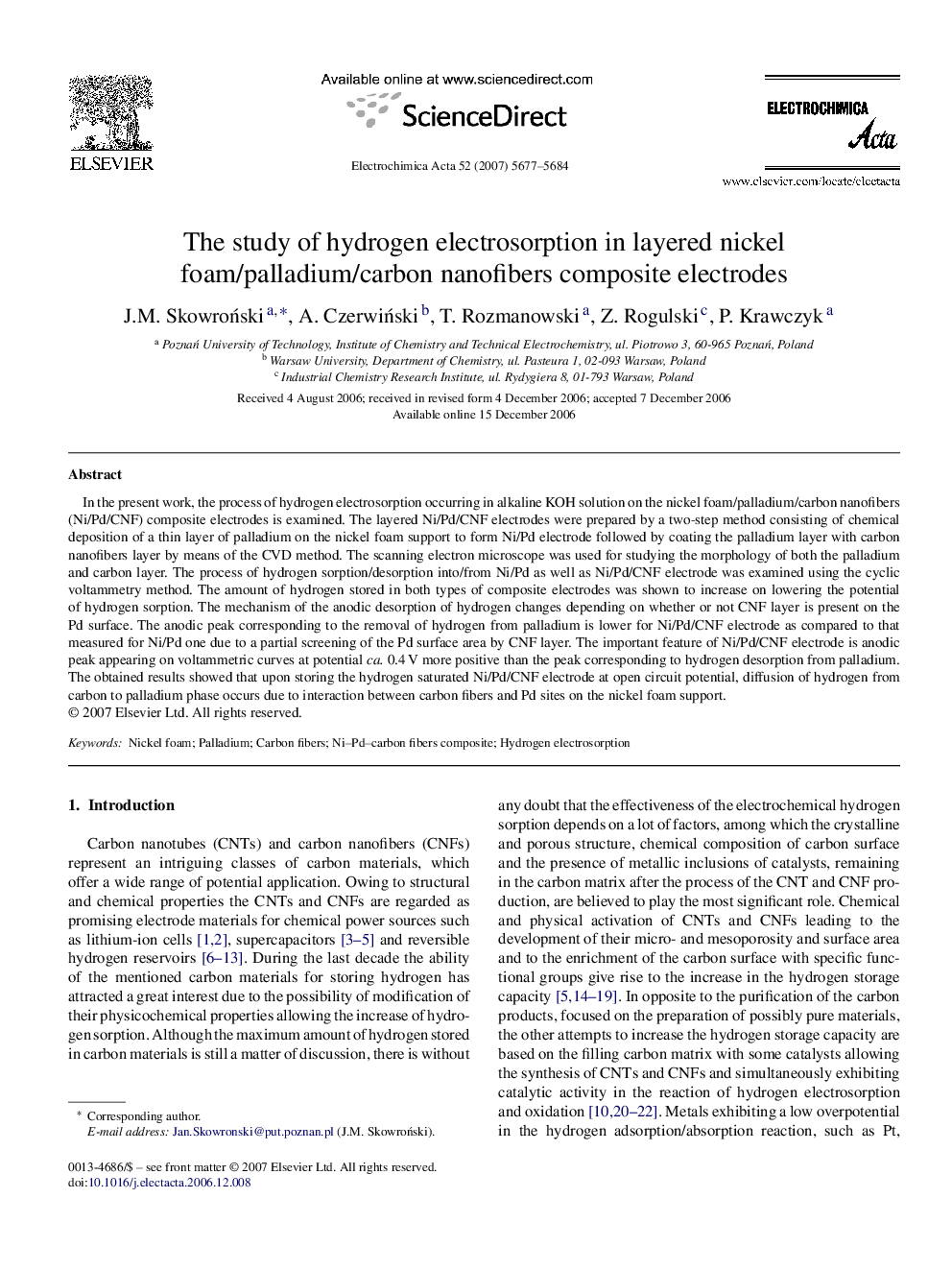| Article ID | Journal | Published Year | Pages | File Type |
|---|---|---|---|---|
| 195899 | Electrochimica Acta | 2007 | 8 Pages |
In the present work, the process of hydrogen electrosorption occurring in alkaline KOH solution on the nickel foam/palladium/carbon nanofibers (Ni/Pd/CNF) composite electrodes is examined. The layered Ni/Pd/CNF electrodes were prepared by a two-step method consisting of chemical deposition of a thin layer of palladium on the nickel foam support to form Ni/Pd electrode followed by coating the palladium layer with carbon nanofibers layer by means of the CVD method. The scanning electron microscope was used for studying the morphology of both the palladium and carbon layer. The process of hydrogen sorption/desorption into/from Ni/Pd as well as Ni/Pd/CNF electrode was examined using the cyclic voltammetry method. The amount of hydrogen stored in both types of composite electrodes was shown to increase on lowering the potential of hydrogen sorption. The mechanism of the anodic desorption of hydrogen changes depending on whether or not CNF layer is present on the Pd surface. The anodic peak corresponding to the removal of hydrogen from palladium is lower for Ni/Pd/CNF electrode as compared to that measured for Ni/Pd one due to a partial screening of the Pd surface area by CNF layer. The important feature of Ni/Pd/CNF electrode is anodic peak appearing on voltammetric curves at potential ca. 0.4 V more positive than the peak corresponding to hydrogen desorption from palladium. The obtained results showed that upon storing the hydrogen saturated Ni/Pd/CNF electrode at open circuit potential, diffusion of hydrogen from carbon to palladium phase occurs due to interaction between carbon fibers and Pd sites on the nickel foam support.
